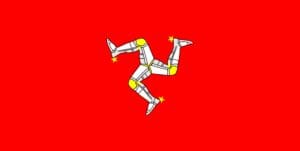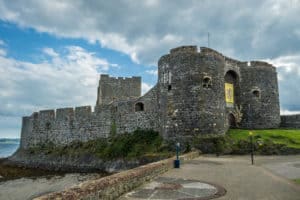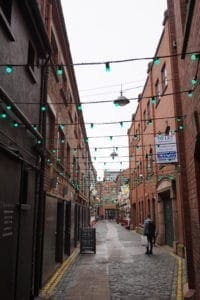Lecce: Falling in Love With The Florence of The South
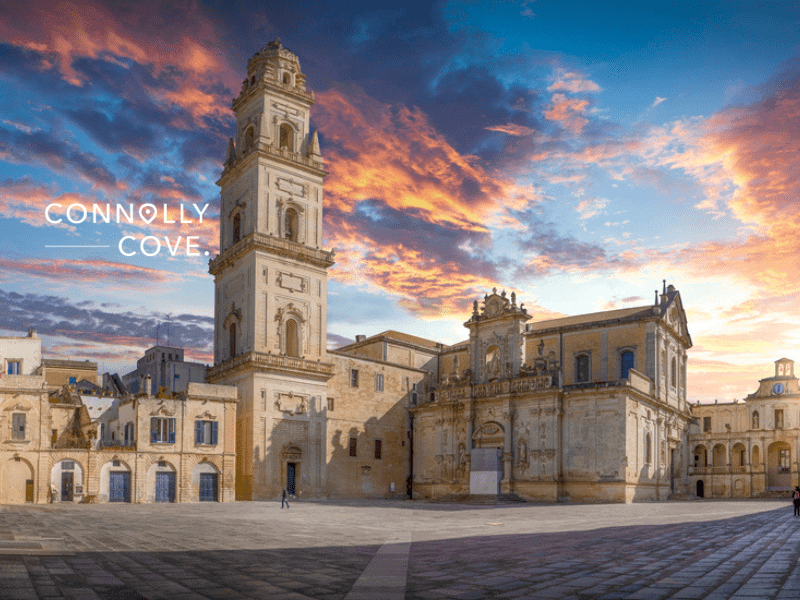
Updated On: April 23, 2024 by Aya Radwan
The Southern Italian city of Lecce is rich in and proud of its Baroque-style architecture. With over 2,000 years of history, every corner in Lecce embraces an ancient story that manifests through its landmarks. At the heel of the Italian boot is the Apulia Region, where Lecce City is the heart of the Province of Lecce. If you’re looking for a new destination in Italy, we couldn’t recommend Lecce more.
In this article, we’ll explore La Firenze del Sud or the Florence of the South; due to Lecce’s magnificent Baroque landmarks, it earned this nickname over the years.
Brief History of Lecce
Tales of an ancient city at the location of Lecce date back to the 13th or 12th century BC, at the time of the Trojan War. However, at the time, it bore the name Sybar and, later, Lupiae after the Roman invasion in the 3rd century BC. The city’s name changed to Licea almost a century later during Emperor Hadrian’s rule.
By the time the city’s name had evolved to Lecce, the locals had built a theatre and an amphitheatre. The city also chose its patron saint, Orontius of Lecce, currently known as Saint Oronzo. Saint Oronzo is the first Christian bishop to live in Lecce and serve its church. Unfortunately, when Lecce came under Ostrogoth’s rule, it was plundered and sacked sometime in the mid-16th century during the Gothic Wars. When it returned to Roman authority, the city prospered for five centuries despite frequent Lombard and Saracen raids.
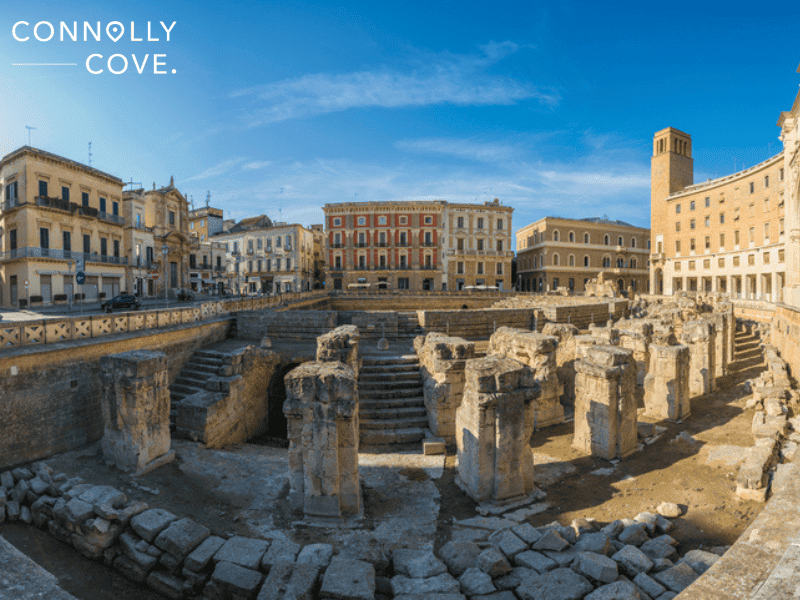
From the 11th century onward, Lecce witnessed great economic, cultural and political prosperity, which helped it become one of the most important cities in the Kingdom of Sicily. This continued to the mid-15th century, and afterwards, the entire region of Lecce became one of Italy’s most important regions. Such importance meant the city must be marked with unique landmarks that truly express the trending architectural styles of the time. Artisans and architects took to engraving the city’s history through beautiful and intricate Baroque landmarks. To protect these magnificent works of art from Ottoman invasion, the locals built a mighty castle and fortification walls around the city, which was in the 16th century.
The Florence of the South became Lecce’s nickname after the construction of the magnificent Baroque landmarks in the city. Lecce is also renowned for its unique limestone, which is softer than usual limestone, making it perfect for sculpting and is one of its main exports. Moreover, the city is known for its magnificent ceramics, exclusive to the city and another field of its specialities. Lecce produces fine olive oil and wine and is a thriving agricultural hub in the south.
What is the best time to visit Lecce?
If you’re looking to enjoy the city away from massive crowds, visiting Lecce during the autumn and spring seasons is best. However, these seasons are unsuitable for beach time; they offer moderate temperatures and quietness. It’s worth noting that the weather during these two seasons can change rapidly from one year to another. So, it’s best to always check the weather before travelling.
The summer season is hectic, so it’s best to visit at its beginning or end; in June and September. June represents the beginning of the summer season, so even though you might find crowds here or there, it’s incomparable with the crowds during July and August. On the other hand, by September, the summer season winds down and the summer holiday is over for many people, so it’s time to go back to work. Not to mention, the scorching summer heat begins to ease a bit.
If you visit not just Lecce but all of Italy during the peak of the summer season; July and August, you might find it difficult to get around. In a cosy city like Lecce, you might feel it’s closing in on you.
What Are the Best Things to See in Lecce?
Lecce is a baroque heaven; nearly every landmark is heavily decorated with baroque-style architecture and decorations. Like all its Italian sisters, Lecce boasts great religious buildings, castles and administrative buildings.
Basilica di Santa Croce
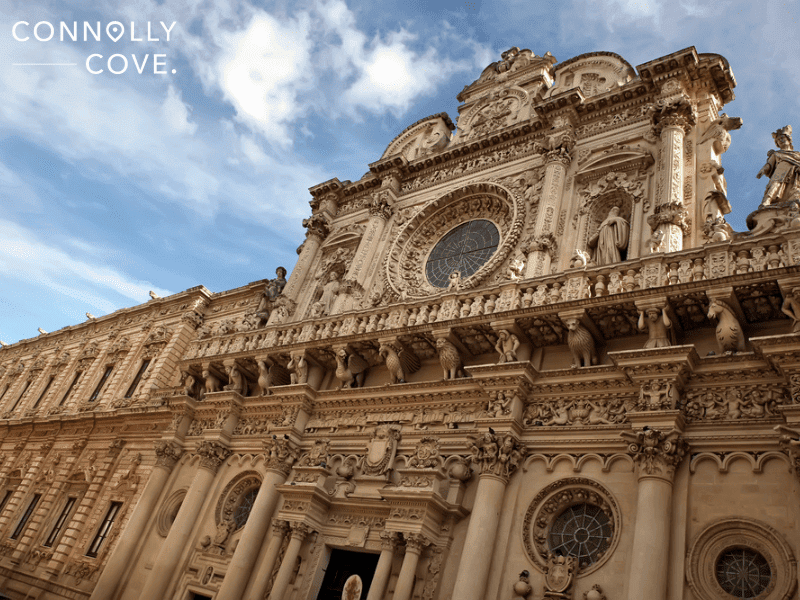
With a rose window in the heart of its façade, the Church of the Holy Cross in Lecce is an impressive Baroque-style church. The magnificent church took two centuries to build, mainly due to the slacking of authorities, political rivalry and, at times, shortage of funds. Construction began in the mid-16th century on the site of a previous monastery. Throughout the centuries, the lower façade, the dome, and the portals were added until the construction and decoration of the upper façade and the rose window were added before construction was finished by the late 17th century.
The church’s decorations are a magnificent work of art. The rose window on the façade sits atop a wonderfully decorated entablature that bears animals, fruits, vegetables and even fierce beasts. Numerous coats of arms are inscribed on the exterior, such as that of Philip III of Spain, the Lecce Countess, Mary of Enghien, Walter IV of Brienne and the Celestines. In the 18th century, two of the church’s isles were turned into side chapels. The church’s main altar bears the coat of arms of the Adorning Family, who are buried inside.
Roman Amphitheater
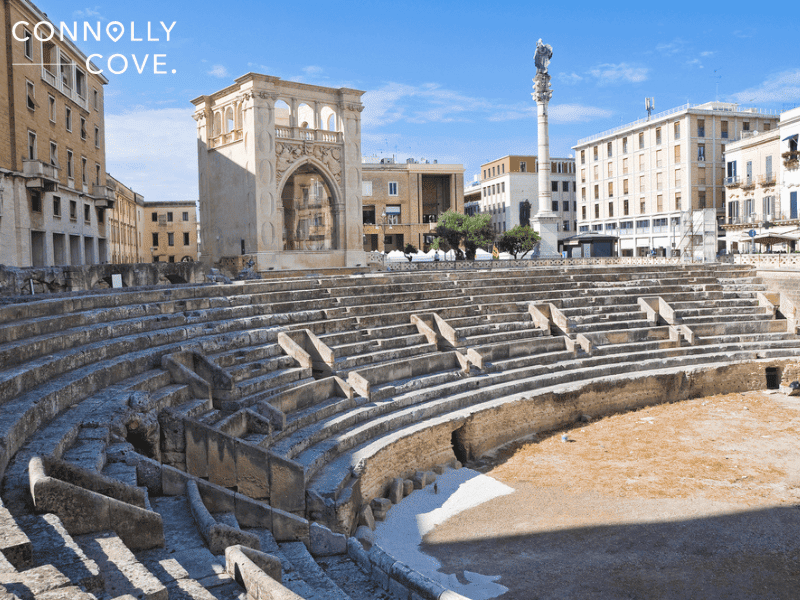
Can you imagine an amphitheatre in the heart of a city that’s completely hidden from view? The yellowish Roman Amphitheater of Lecce presents just the case; for years, it was hidden beneath the surrounding buildings until it was discovered in 1901. This amphitheatre is one of a kind, not only because it’s unusual to find a Roman relic in an Italian city, but also not one that’s so well preserved. Engravings on the walls indicate the amphitheatre was built in the 2nd century BC, under Hadrian’s rule.
Although a great part of it remains buried underground, the amphitheatre’s distinctive shape is apparent. With its full capacity, it could have held 15,000 spectators to watch gladiators wrestling each other or with animals, bulls or lions. The yellowish colour of the building is due to the use of Lecce limestone to build it. You can always visit the amphitheatre. However, at times, you can not enter it. Today, it is used as a venue for music shows and other events.
Museo Faggiano
The Museum of Faggiano has the funniest story of coming into existence. When Luciano Faggiano and his sons dug around diligently beneath their building for seven years, they accidentally broke fake floors. Through these floors, they unearthed archaeological artefacts that date back to more than 2,000 years.
Even though the Faggiano family found layers upon layers of artefacts, they couldn’t find the faulty pipe. After reporting to the authorities and with the supervision of an archaeologist, they continued the dig until they found the pipe and fixed it. This unbelievable journey unearthed more than 5,000 artefacts displayed in the layered museum. Artefacts include a Messapian tomb, inscriptions from the Knights Templar and a Roman granary.
Porta Napoli
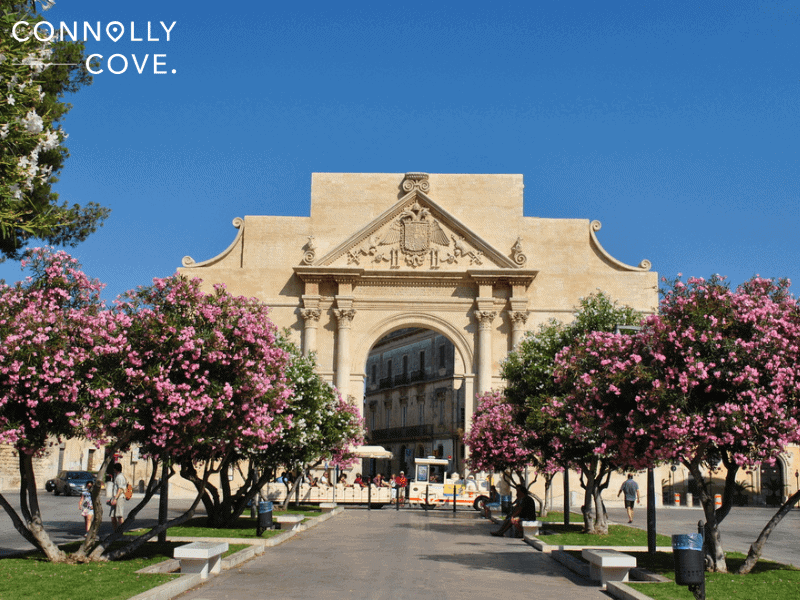
The Gate of Napoli is one of three gates that lead into Lecce’s historical centre. The other two gates are Porta Rudiae (Rudiae Gate) and Porta San Biagio (The Gate of Saint Biagio). This gate bears the name of Napoli because it was the gate through which the city’s principal rode to Napoli. The citizens and the city’s principal, Ferrante Loffredo, wanted to honour Charles V for his attention to Lecce and his order to fortify the city against foreign invaders.
Like the two other gates, the Gate of Napoli is another testimony of the magnificence of the Baroque architectural style. Since it honours Charles V, the decorations include his Habsburg Coat of Arms, armours, and inscriptions that praise Charles V. Around the gate, the University of Salento has been carrying numerous excavations, which revealed priceless Messapian artefacts.
Castello Carlo V
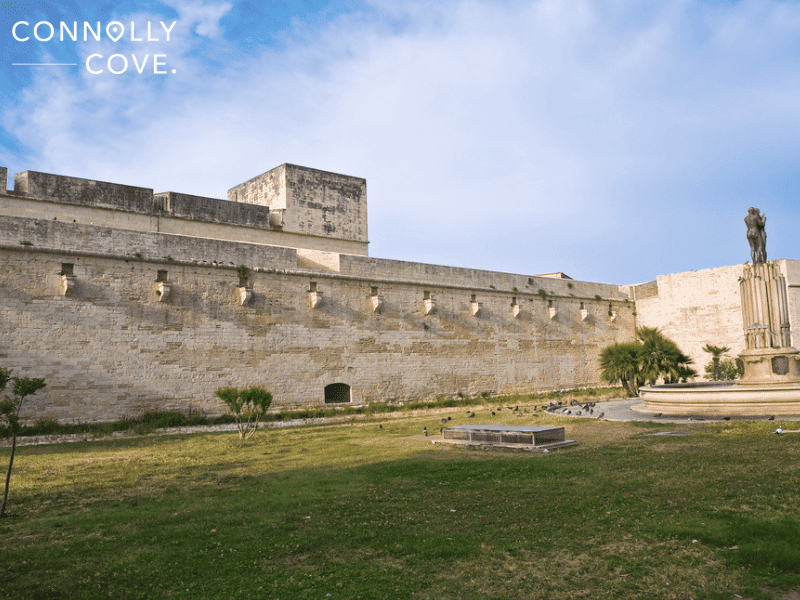
The Castle of Charles V had existed in Lecce before Charles V visited the city. He ordered the fortification of the castle in the 16th century. Originally made after demolishing two religious buildings, the city’s Monastery of the Benedictine Order and Chapel of the Trinity, the fortress held up well and remained in use until the 1970s. The military had used it as a stronghold for over a century.
Even though Castello Carlo V is now a government building, visitors can still access the castle and wander around. There’s an urban legend connected with the castle’s 14th-century owners. Legend has it that the owners, the Orsini del Balzo, kept a white bear in the moat to scare thieves away. The Cultural Affairs officials of Lecce work from the castle.
Piazza del Duomo
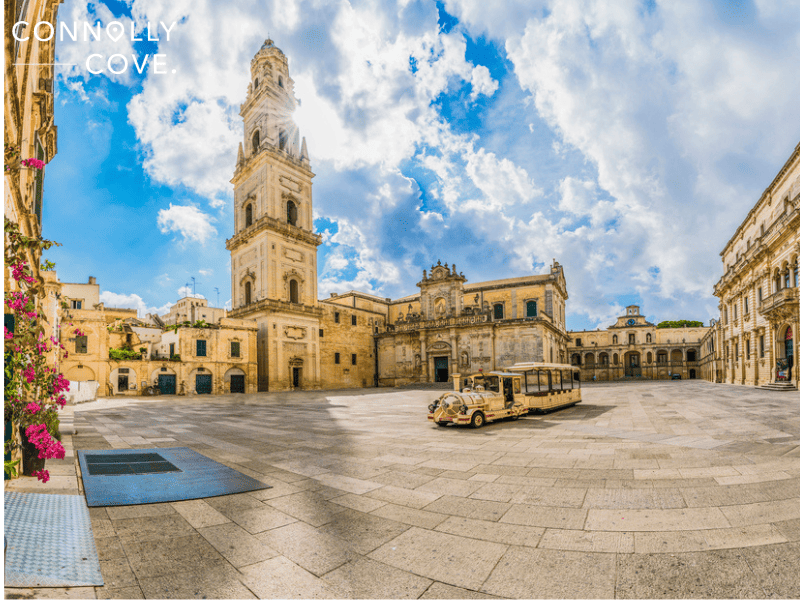
Nearly every city in Italy has a Piazza del Duomo; a main square where the city’s main church is located, and Lecce is no different. The Piazza del Duomo takes its name from the Church, or Duomo, of Santa Maria Assunta. Like every landmark in Lecce, the Piazza del Duomo exhibits a magnificent Baroque style. The square, one of the main squares in the city, is a closed square, which was a rare construction at the time of its construction in the 18th century. There’s only one way in and out of the square; the three other directions are closed.
There are several interesting features about Piazza del Duomo. For instance, back in time, the piazza’s doors closed at night, which are gone now, but marks of them remain. Another one is that when you step into the square, you will find yourself entering the duomo. This genius detail ensures that the visitors live the Lecce and Duomo experience fully.
Abbazia di Santa Maria di Cerrate
The Otranto Romanesque architectural style finds a great exhibition on the façade of the Abbey of Santa Maria di Cerrate. This 12th abbey has a history of legends and fighting injustice. After the legend of the Madonna appearing to the Count of Lecce, Tancredi d’Altavilla, through a deer’s antlers was refuted, its construction remained a mystery. It wasn’t until recently that historians placed the abbey in the 11th century and its founder as Bohemond of Hauteville and not Tancredi a century later.
The abbey remained the centre of Christian belief and worship until the establishment of the Church of Saint Niccolo and Saint Cataldo, which worshippers fled to from persecution. After falling into disrepair in the 18th century following being sacked by Turkish pirates, the abbey remained abandoned for centuries. It was as recent as the 1960s that the province restored the abbey to its former glory.
Museo Sigismondo Castromediano
Magnificent paintings, artefacts, ceramics, pottery and ivories are just a sliver of the wide array of historical exhibitions at the Sigismondo Castromediano Museum in Lecce. Sigismondo was the Duke of Cavallino, and he established the museum in the 1860s. The museum accumulated its artefacts over the years to create such a vast collection. Perhaps one of the earliest exhibitions at the museum includes Messapian artefacts and the ancient Roman settlements.
The museum also includes works from the 18th century onward by artists who were influenced by Venetian and Byzantine cultures, such as Lorenzo Veneziano and Agostino Beltrano. This museum is the oldest one in Lecce, and it suffered from neglect after the duke’s death. Unfortunately, many pieces were moved from the Sigismondo Castromediano Museum to other museums, such as the Taranto Museum. Due to these priceless losses, the Sigismondo Castromediano Museum remains a provincial museum to this day.
Villa Comunale di Lecce
For a great time to relax in the city, you can always visit the Giardini Pubblici di Giuseppe Garibaldi, which is the other name of the Villa Comunale. The garden is beautifully groomed and paved with water fountains gracefully decorating its various sides. Giuseppe Garibaldi was an Italian general who fought for the country’s independence and unification, even though he was born in France. His efforts are commemorated through numerous landmarks that bear his name.
Around the garden there are various shops, cafés and restaurants to enjoy a bite with a great view. However, our personal recommendation is getting a gelato to enjoy as you walk around the garden and explore its beauty. I’d you’re travelling with kids, there’s a great children’s area to play as well.
Il Sedile
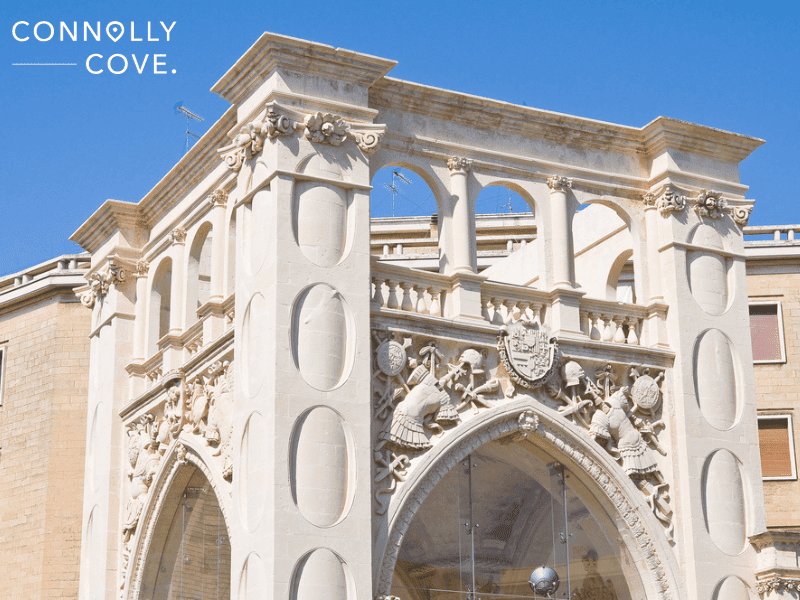
In the heart of Lecce’s historical centre, the Piazza Sant’Oronzo holds a mighty and magnificent palace named the Seat of Lecce. Adjacent to the Church of Saint Marco, the palace’s façade is an incredible Gothic and Renaissance architectural style masterpiece. A previous palace stood where the current one is now but was demolished in the 1580s, and the new one was erected in 1592.
Il Sedile, or The Seat, used to house the seat of the city and housed the city hall until the 1850s. After that, the building was transformed into an art gallery exhibition space. Historical evidence shows that the façade once bore an intricate clock carrying two statues.
Cattedrale di Lecce – La Cripta
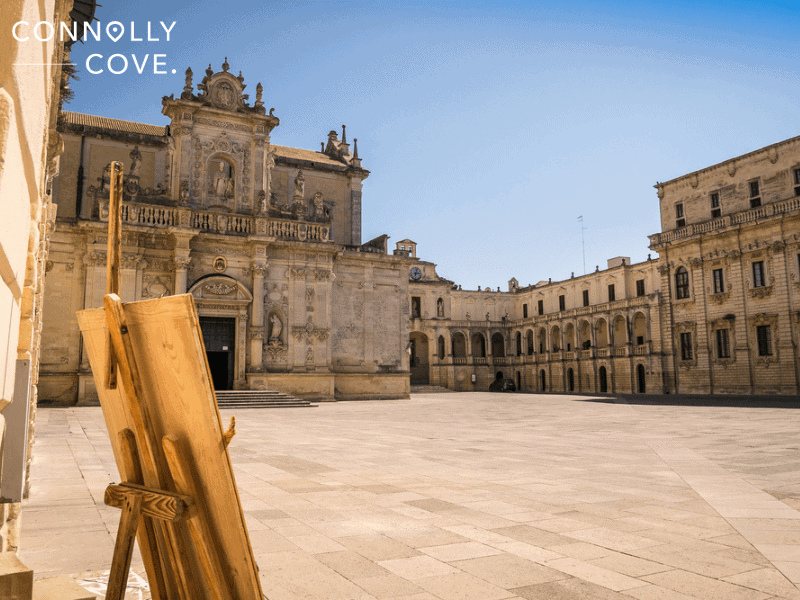
The Cathedral of Lecce is a 12th century that sits on one of the sides of the city’s Piazza del Duomo. Although the cathedral has two access routes from the north and the west, the north one is the main entrance. The mid-12th century Baroque masterpiece underwent several repairs throughout its history. Giuseppe Zimbalo rebuilt the cathedral in the 1650s; he was a famed architect who left his mark on various landmarks in Lecce.
With a magnificent altar dedicated to the city’s patron saint, Saint Oronzo, the cathedral’s north and main façade is an exquisite work of master carving. It bears the statues of Saint Giusto and Saint Fortunato, while at the centre of the façade, up high, is a magnificent statue of Saint Oronzo. Zimbalo built the bell tower in the 1660s, and is another incredible masterpiece. It has five levels topped with a statue of Saint Oronzo, and each of the windows in the four levels has inscriptions and overlooks the Adriatic Sea.
Lido Marini Beach
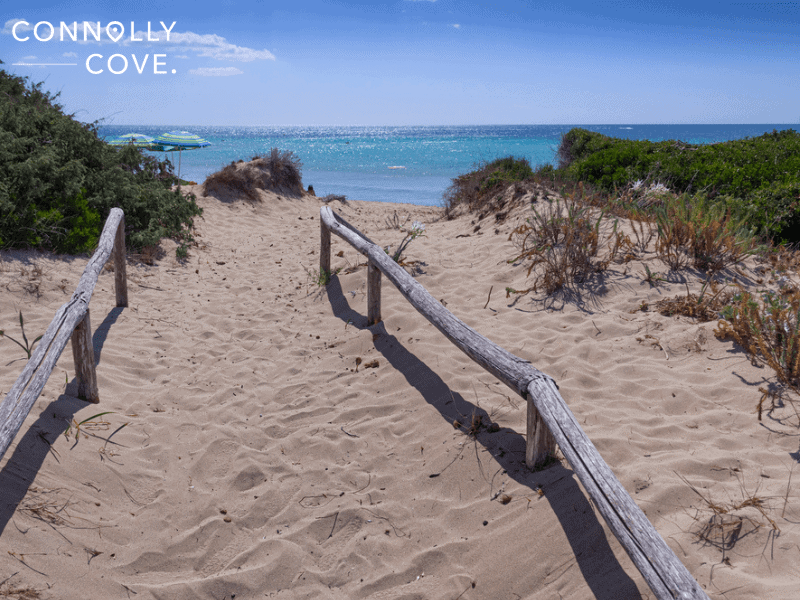
Now, let’s take you away from the city centre to an incredible relaxation spot a few kilometres away from Lecce, Lido Marini Beach. This beach is as wondrous as you can imagine, with crystal-blue water and soft-caressing white sand. Sea resorts have taken a great part of the beach’s space, but don’t worry, there’s still plenty of space for free access.
Facilities available at the beach include everything to think of: umbrellas, chairs, loungers, changing rooms, showers and restaurants. As we’ve mentioned earlier, to ensure it’s warm at the beach, you might want to visit at the beginning of the summer season or the end. Anytime in between will be incredibly crowded, especially with such an easily accessible beach, with parking and various available water sports.
Our visit to this incredible southern hub of history, beauty and charm has been the most thrilling, and we hope you plan on visiting soon and enjoying your time there.


